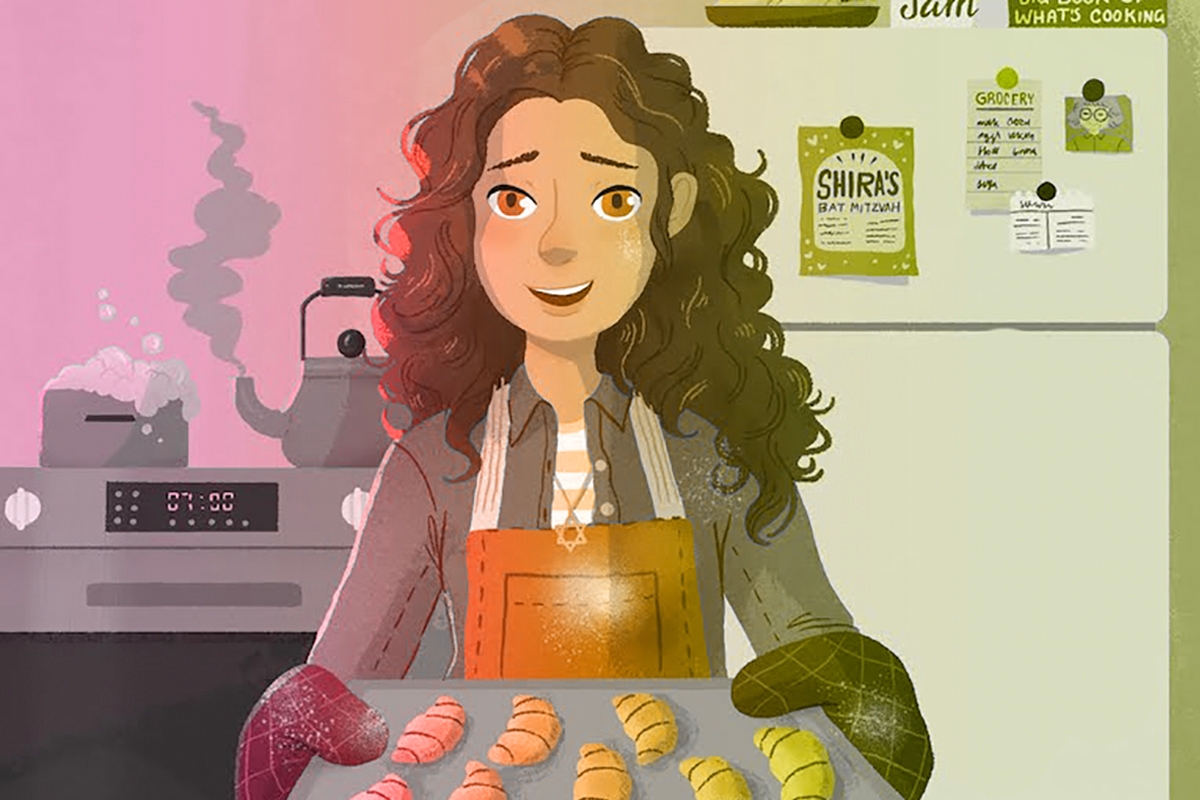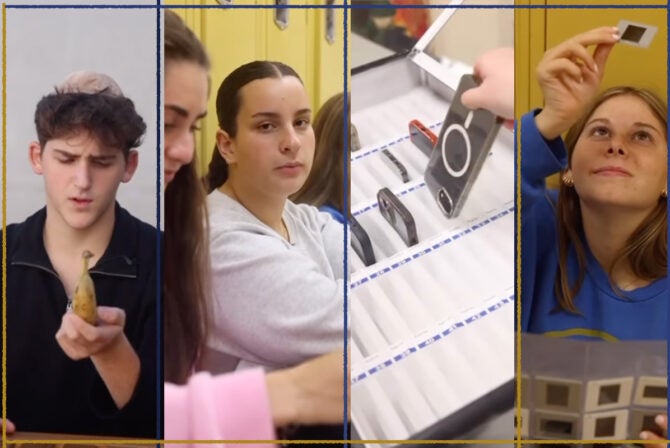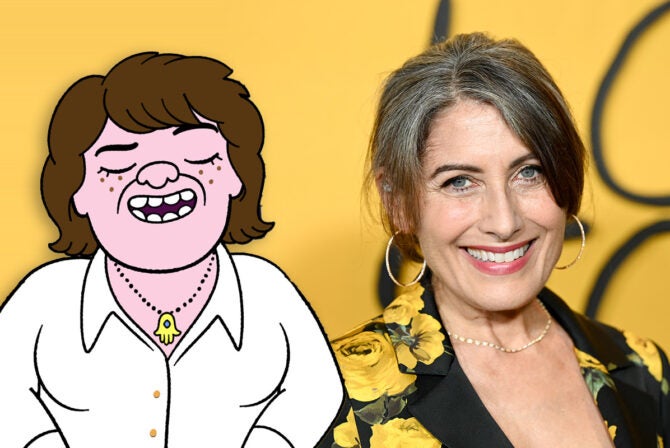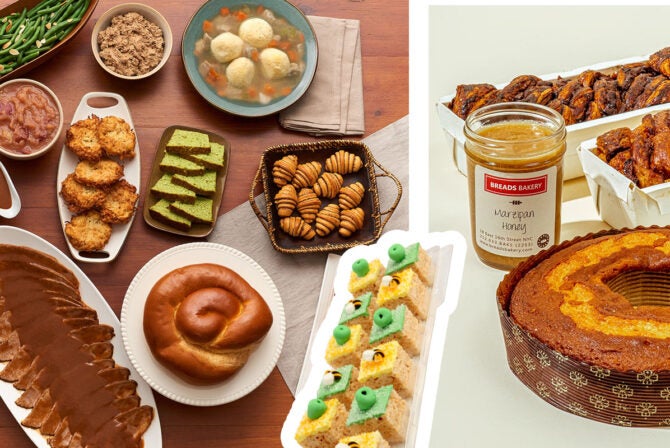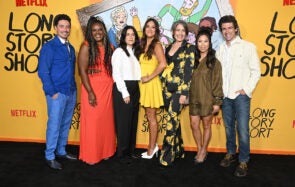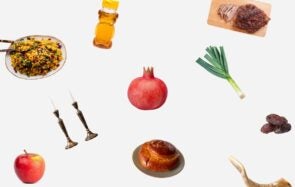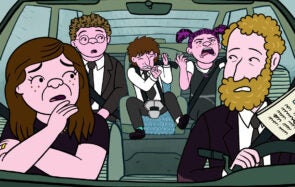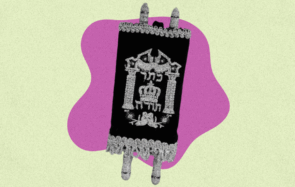“Recipe for Disaster,” the sophomore middle-grade novel by writer Aimee Lucido, is not your typical bat mitzvah story. In fact, it’s pretty much the opposite of it.
While most bat and bar mitzvah books are about young teens reluctantly taking on the coming-of-age Jewish ritual, usually forced by their parents, and, in the process, finding meaning in it, “Recipe For Disaster” is about a girl who wants to have a bat mitzvah so bad that she goes behind her parents’ backs to have one — secretly sneaking off to Torah lessons with her estranged aunt and teaching herself to recite from the Torah behind the closed doors of her bedroom, hoping no one will hear.
Of course, the reasons Hannah Malfa-Adler, the protagonist of “Recipe for Disaster,” wants to have a bat mitzvah aren’t exactly noble. After seeing her best friend, Shira, be the center of attention at her bat mitzvah, Hannah, feeling jealous and dejected, desperately wants to have one.
Hannah’s father was raised Catholic, and her mother was raised Jewish, but both relinquished their religious affiliations as adults. Hannah’s parents insist that she isn’t Jewish, and refuse to agree to her having a bat mitzvah. The moments in which Hannah’s Jewish identity is refuted, by her parents and by Shira — despite the longing and connection she eventually develops to Jewish rituals — are some of the most painful ones in the book.
Originally, Lucido wanted to center the book around Shira’s story, but the details of a bat mitzvah weren’t really flowing. “I had absolutely no idea how to write these scenes because they were never things I had experienced for myself,” Lucido tells Kveller. She grew up in a home just like Hannah’s and wanted a bat mitzvah “so badly my teeth hurt,” so asked herself, “What would my story be?”
“And that is when the character of Hannah came to me,” Lucido explains. “She was Jew-ish, like me, not sure if she counted, but desperately wanted to find where she fits within the Jewish community.”
The book weaves in Hebrew letters, Torah portions and bat mitzvah invitations, making it an incredibly engaging read — along with a lot of Jewish food, including actual recipes for staples like babka and rugelach. But at its heart is the question, “What makes someone Jewish?”
Over e-mail, Lucido told Kveller about her own Jewish insecurities, having a “book mitzvah,” and what she wants kids who, like her, don’t feel “Jewish enough” to know.
This interview has been lightly condensed and edited for clarity.
So I grew up in Israel, where I always felt Jewish enough, but where most secular girls like me don’t have a religious ceremony for their bat mitzvah. Reading this book did make me a little melancholy about that! But I also loved Hannah’s very meaningful alternative bat mitzvah, and it made me want to think about what I would have liked to do if I could have a do-over. If you could throw your own bat mitzvah now, what would it be?
I absolutely love this question because my launch event for “Recipe for Disaster” was exactly this! Me throwing myself a belated bat mitzvah! I called it my “book mitzvah” and I wanted it to be as meaningful as it could be while still followable for a non-Jewish guest. Coming up with the program was a perfect capstone to finish off the project and I truly left the experience feeling like I gave myself the rite of passage I had always craved — just like Hannah!
As far as the program itself went, first and foremost, there was food. Lots of food. I baked the three “main” foods from “Recipe for Disaster” — rugelach, sufganiyot, macaroons — and also two challahs, one honey and one chocolate chip.
For the service itself, I started with “Hinei Ma Tov” followed by the Kiddush and the Hamotzi. I had a friend of mine make me a dress out of a Hebrew letter fabric that would serve as my tallit (complete with tzitzit earrings!). I learned how to chant some of the prayers for taking the Torah in and out of the ark, but the bulk of the time I spent preparing for the book mitzvah was centered around my Torah portion.
I learned that if I had had a traditional bat mitzvah when I turned 13, then my Torah portion would have been Vayera. And while it didn’t feel authentic to me to read from the Torah itself, I really liked the idea of taking some of the themes from Vayera and connecting them back to my own journey with Judaism and with writing the book. As I was reading Vayera I kept finding moments that touched on issues of age and identity and the connection between who we are and how we present ourselves in the world. All of these themes resonated with me as a Jew who has started to connect more deeply with Judaism later in life, and that ended up being the focus of my Torah portion.
I actually ended up doing two events, one live (with food) and one virtual, and the virtual one was recorded. You can find it here if you want to see the whole thing!
Tell me about the recipes in this book! How did you go about developing that part?
Originally, I thought I wanted to focus Hannah’s story on the science of cooking, since that was something I was interested in, and because it tied back to my first book, “Emmy and the Key of Code.” As I wrote more of the book I found myself being drawn deeper into the history of food rather than the science of it. I started thinking about the seasonality of Jewish food and how there are recipes that, for me, have practically become synonymous with certain times of the year (brisket for Passover, latkes for Hanukkah, apples and honey cake for Rosh Hashanah). In some ways, the food we eat provides a heartbeat for the passage of time, and I wanted to bring that out as I wrote the book.
What’s your favorite recipe in this book?
Oooh, this is tough… My favorite recipe from the book may be sufganiyot. I had never made it before beginning my research for this project, and that was in no small part because I had never felt confident in my ability to use yeast in my recipes, or in my ability to deep-fry. But now the fact that I can make my own cream-filled donuts feels like a superpower.
A lot of this book is about who gets to decide what it means to be Jewish. At the end of the day, Hannah comes up with what I think is the right answer, which is the most important arbiter of that is you. What are some moments in your life when you felt like you might not be Jewish enough?
I am constantly feeling like I might not be Jewish enough, in ways both large and small. Sometimes that feeling comes from someone else’s dismissal of my identity, but more often it comes from my own insecurities about who I am.
I remember in middle school, during the bat mitzvah years, every time I’d walk into a temple, I’d feel this strange sense of ownership over the whole service. But then as soon as I felt that way I’d immediately chastise myself because I wasn’t really Jewish and had no right to call the experience my own.
Even now, when I go to services (which is rare), I find myself trying to see how much of the Hebrew I can follow along with because I feel like if I can succeed at pronouncing the Hebrew, then that means I’ve passed some “test” about how Jewish I am.
When I was in college, sometimes I’d go with friends to Friday night Shabbat dinners, but every time I’d go I’d feel like I was crashing someone’s party. Like I had managed to sneak my way into something in order to score free food. And no matter how much my friends assured me that this was not the case, I could never shake the feeling.
Even now that I have a Jewish book out in the world, when I find my name on Jewish lists, I always need to remind myself that yes, I do belong there. It’s not a mistake. I’m not lying about anything.
Feeling comfortable in my own Jewish-ness is a constant internal battle. Even something as simple as posting a picture of my Hanukkah menorah on Twitter can send me into a spiral of “am I Jewishing right?” questions. Did I light the candles from the right side of the menorah? Did I get the number right? Is my dragon menorah too silly and will people judge me for it? Is the cheat sheet I printed out with the prayer written on it visible in the photo? Is the only reason I’m posting this picture at all to make me feel more Jewish? Would I even need to do that at all if I were really Jewish in the first place?
In the end, I wrote this book for myself — or at least the childhood version of myself. Maybe if a book had told me that I get to decide whether or not I’m Jewish, I’d believe that today.
What would you say to kids who don’t feel Jewish enough? Or who feel out of place in Jewish spaces?
If someone doesn’t feel comfortable in Jewish spaces, I want them to ask themselves why. Is it because they feel like other people are judging them? Or is it because they genuinely don’t feel like they can be themselves in those spaces? I think there’s a huge difference between those two ways of feeling out of place: One is external and one is internal.
If they feel like other people are judging them for being somewhere that they themselves want to be, I hope this book gives them something they can point to, words they can repeat to themselves when they want to assert themselves in those spaces. But if they feel out of place because there is an internal mismatch, I want them to listen to that, too. If the Jewish rituals feel empty to them, or unsafe, or if they’re going to services just to please family or to prove something to their friends, then it’s not worth it.
I realize that kids don’t always have the power to leave spaces in which they feel uncomfortable, but to whatever extent they are able to remove themselves from bad situations, I want this book to empower them to do that. Our discomfort is an incredibly valuable signal, and so often we are taught to dismiss it. We contort ourselves into painful shapes in order to fit into spaces that weren’t designed for us. But we shouldn’t have to do this. We should listen to our intuition, because it is there to protect us. And in the end, this book is about being Jewish in your way. Not in your parents’ way, not in your friends’ way, not in the way that you read about in a book. You can be just as Jewish in the parking lot of a McDonald’s as you can be in a temple, and I hope that comes through in this book.
What are you hoping that kids reading this book will take from it?
If readers of “Recipe for Disaster” take only one thing from it, I want it to be the last paragraph of my author’s note. When it comes down to it, there is only one person in the entire world who can give you permission to be who you are. And that person is you.
